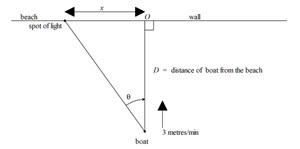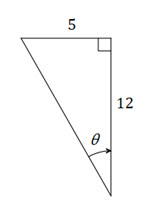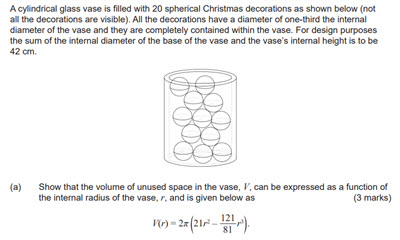How to differentiate something in the form ![]()
For example, ![]() , we could expand the expression, but the Chain Rule provides a quick and easy method.
, we could expand the expression, but the Chain Rule provides a quick and easy method.
Differentiate ![]()
Let ![]() , then
, then ![]()
We want to find ![]() , but
, but ![]()
They’re not fractions, but limits of fractions, but they work like fractions.
![]() and
and ![]()
Therefore, ![]()
Replace ![]() with
with ![]()
(1) ![]()
What about a function in the form ![]() ?
?
We’re going to follow the same process.
Let ![]() , then
, then ![]()
![]() and
and ![]()
Therefore ![]()
(2) ![]()
Equations ![]() and
and ![]() are versions of the Chain Rule.
are versions of the Chain Rule.
Example
Find the derivative of ![]()
![]()
![]()
![]()
Next time we are going to look at the Product Rule.





